Houseplants require proper care and maintenance. Improper care leads to plant problems such as insect pest attacks and microbial diseases. Insect pests voraciously feed on houseplants and damage their foliage, flowers, and roots. There are different types of houseplant bugs and these insect pests have piercing-sucking (stylet) and chewing mouthparts, such as aphids, whiteflies, earwigs, scale insects, mealybugs, springtails, thrips, fungus gnats, spider mites, root ball pests, leafminers, caterpillars, grubs, and russet mites.
All these insect pests infestations multiply rapidly, and houseplants begin to look ill. In addition, some indoor plant species ultimately damage them and sometimes make it worthless to work on sick houseplants.
In this write-up, we’ll shed light on different types of houseplant bugs and how to get rid of them. These pests harm houseplants in various ways, and their timely identification and management prevent our indoor plants and interior spaces.
What Are The Different Types Of Houseplant Bugs?
There are many types of houseplant bugs that suck plant sap, chew plant parts, and damage the entire plant. The following list describes the different houseplant insect pests with their control tips:
1. Fungus Gnats
Fungus gnats resemble fruit flies. Both larval and adult fungus gnats cause severe problems for houseplants and outdoors. The infested plant will show signs and symptoms of sudden wilting, loss of vigor, falling leaves, and yellowing. In addition, these tiny houseplant pests are attracted to humid and moist soils.
The adult fungus gnats are grayish-black flies with long legs and transparent pairs of wings. The adults are weak fliers and only emerge from houseplants when disturbed.
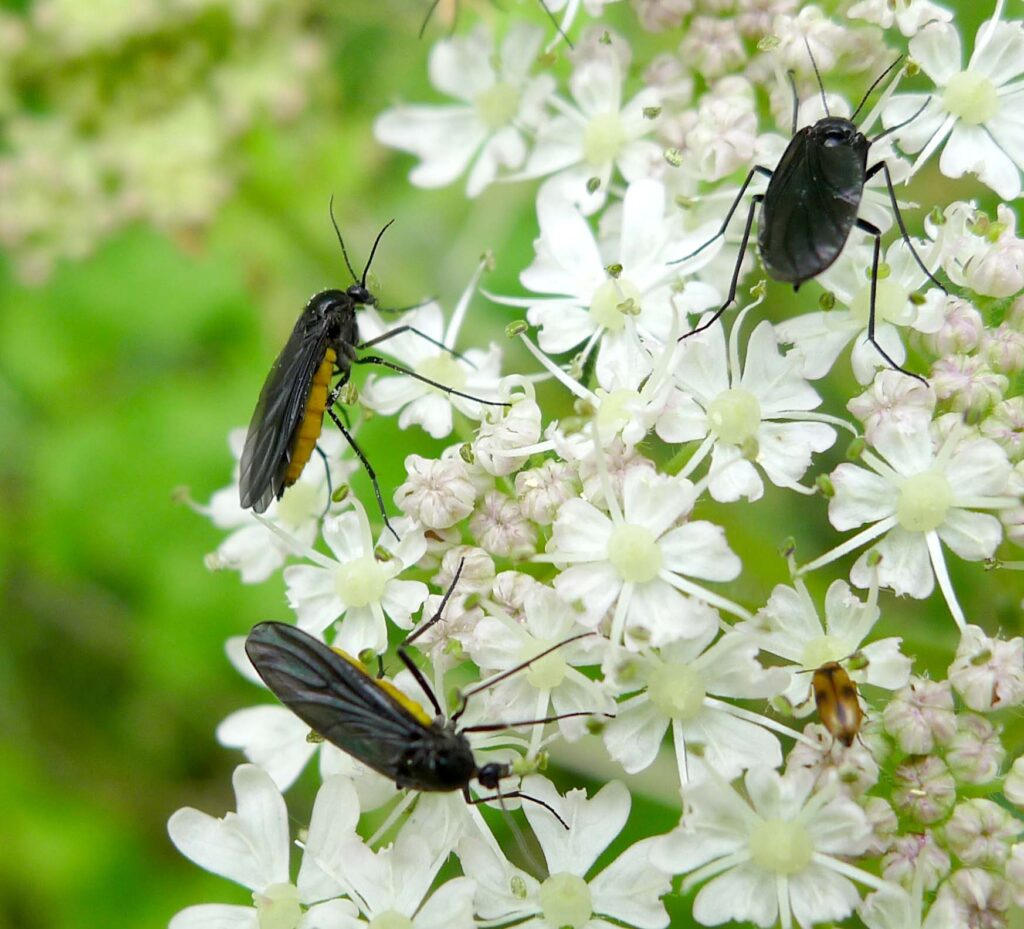
Fungus gnats lay eggs in moist and nutrient-rich soils. They lay up to 300 eggs in one week, and within four to six days, the tiny larvae emerge from eggs and start feeding on roots. The entire lifecycle of fungus gnats is completed in three to four weeks depending upon the favorable conditions.
Control Of Fungus Gnats
This (fungus gnats) pest infestation completely turns the plant weak, yellow, and wilted. At the same time, the shiny larvae feed on tender plant roots and interrupt the nutrient and water absorption process. Therefore it is best to get rid of this pest as soon as possible. And the adequate measures are to avoid overwatering of houseplants because fungus gnats do well in damp soils.
Avoid potting soil with more excellent water holding capacity and organic matter such as peat moss. These soils encourage female fungus gnats for egg-laying places—permanently sterile potting soil to kill any kind of insect pests, eggs, and larvae.
RELATED: Pests in Succulents and How to Get Rid of Them by Chemical & Natural Ways?
2. Aphids
Aphids are small and pear-shaped insects that are serious pests for indoor and outdoor plants. They feed in clusters on tender and new growths of garden and houseplants. These soft-bodied insects are a serious problem when in high numbers.
The heavy infestations of aphids cause leaf curling, yellowing, and stunted plant growth. At the same time, aphid infestations are also associated with microbial diseases because they transmit viruses and reduce plant vigor to fight back against illness.
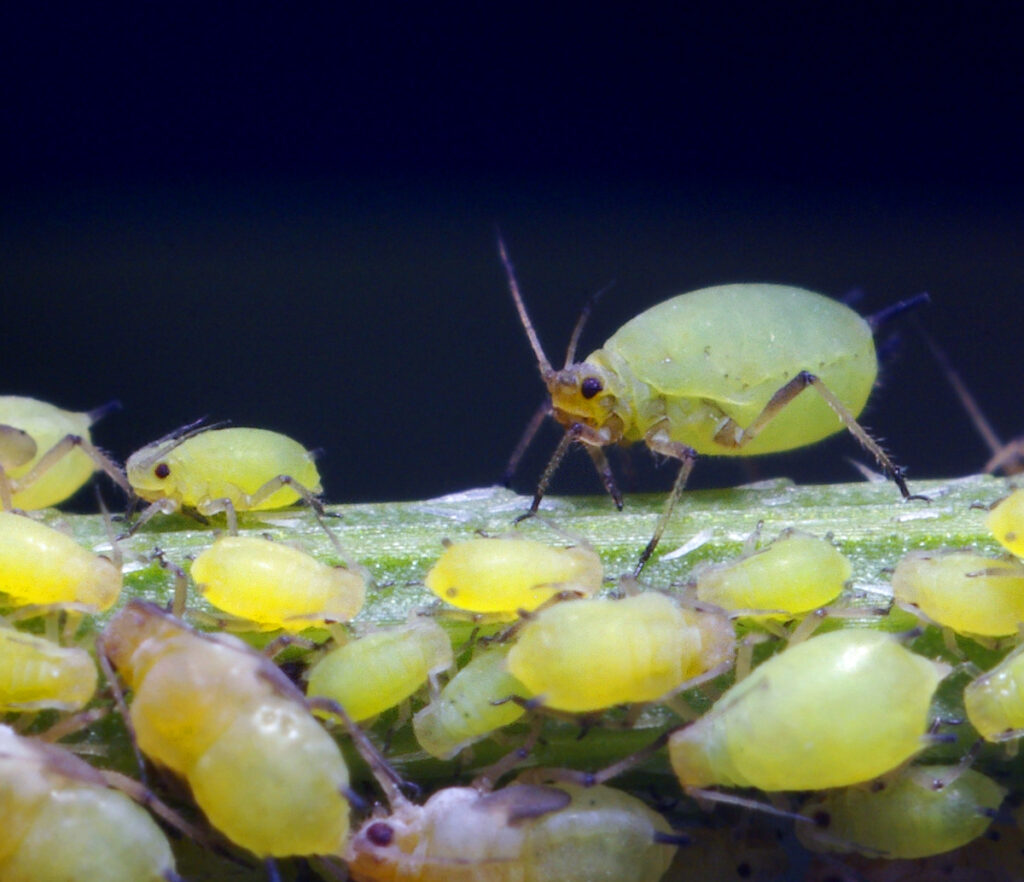
Aphids appear small with varying body colors such as green, yellow, black, brown, and red. The variations in body color depend upon aphid species and food sources. They are barely one millimeter in size and have piercing-sucking mouthparts.
Some species of aphids lack wings, while some grow wings during high populations. The adults have sharp whip-like antennae at the tip of the head and tube-like projections at the hind end.
During feeding on their hosts, aphids suck plant sap and secrete a sticky substance known as honeydew. This sweet sticky substance is the food source for secondary pests and develops black sooty mold growth on leaves. This growth impacts the cosmetic value of indoor plants.
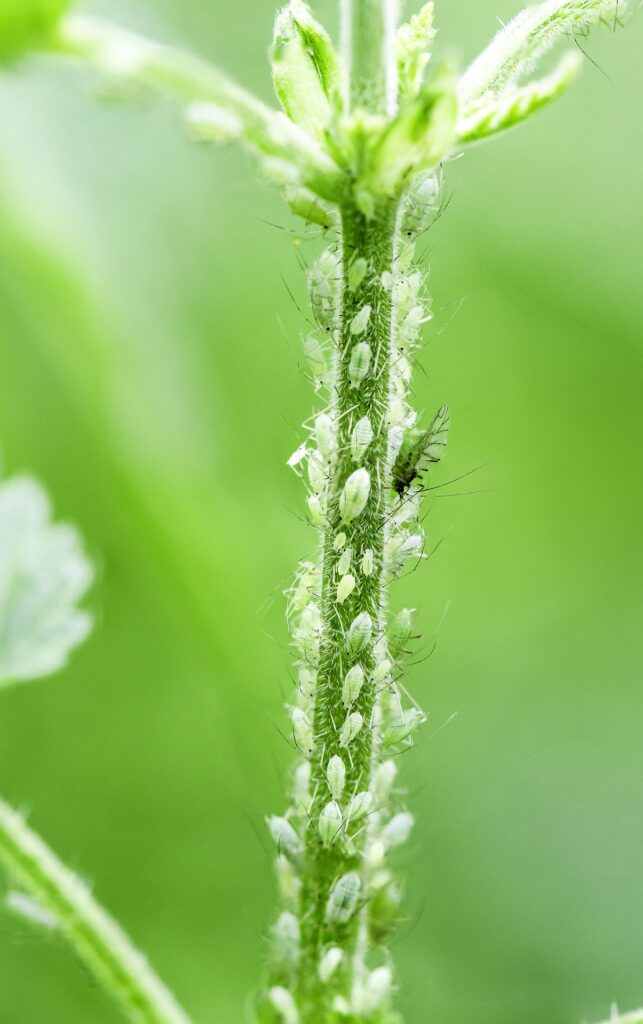
Adult aphids lay overwintering eggs in late summer. And in early spring, the wingless nymphs emerge from overwintering eggs. The newly emerged nymphs start feeding on plant sap. Within one week, the young nymphs develop into adults and give birth to many young nymphs. This leads to aphids population explosions and starts sucking the juice from host plant tissues.
The rate of reproduction is much higher in aphids, and that’s why they have overlapping generations per year. In many other aphid species, they do not mate to reproduce. Instead, they produce young nymphs rather than eggs.
Control Of Aphids
Aphids are the most destructive pest of houseplants and other plants. It has many overlapping generations per year due to asexual abilities. They feed in the form of clusters and stunt plant growth and development. Because of this fact, they are the worst enemies of houseplants and garden owners.
To get rid of these soft-bodied insects, use their natural predators, such as ladybird beetle, lacewings, hoverfly larvae, parasitic wasps, and crab spiders. These natural enemies will prey on aphids and reduce their numbers on houseplants.
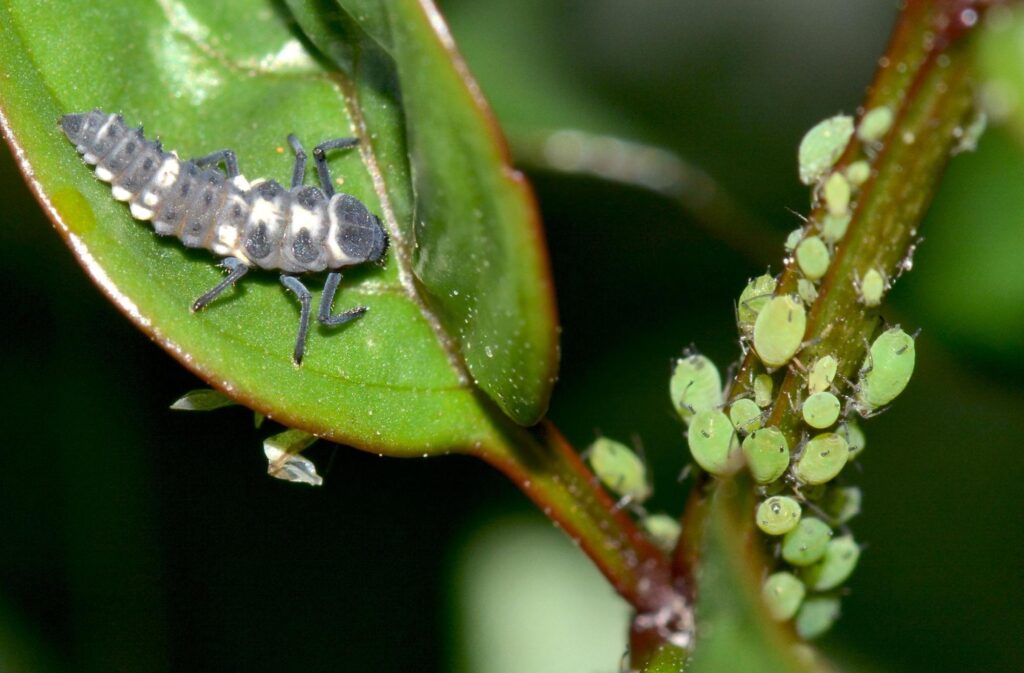
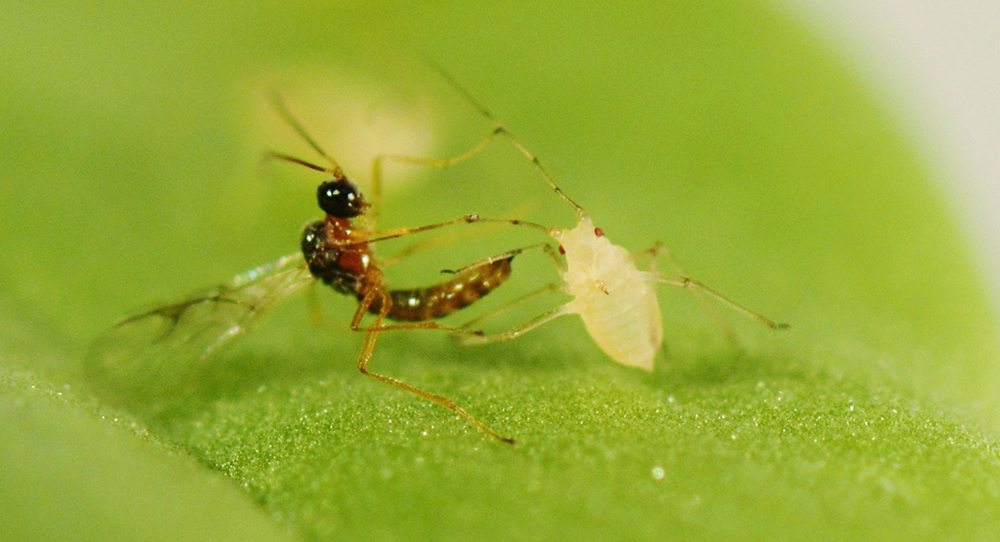
Another best way to control these houseplant pests is to discard and dispose of the heavily pest-infested plants completely. Prune out the high-infested plant parts and toss them. Apply 100 percent dry diatomaceous earth for durable protection against aphids. The diatomaceous earth ruptures the insect cuticle and kills them.
The application of insecticidal soap is also effective against aphids. In addition to that, the spray of horticultural oils, neem oil, pyrethrins, and imidacloprid also control aphids.
3. Scale Insects
Scale insects are not only the most common houseplant pest but also gardens, landscapes, and field crops. They suck sap from plant leaves, twigs, branches, and fruits. Almost 1000 species of scale insects harm plants and are present worldwide.

Scale insects are the weird-looking creatures that stick around host plants’ leaves, twigs, and stems. These are immobile throughout their life and resemble raised bumps rather than insects. However, if the population build-up of scale insects goes unnoticed, they reduce plant strength and look healthy.
The heavy pest infestation leads to the yellowing and poor growth of the entire plant. In the case of unnoticed infestations, the plant succumbs to injuries and dies.
Scale insects are characterized based on their body excretions. The scale insects with hard body coverings are called armored scales. These hard scales live and feed under these coverings and remain sessile.

The armored scale insects do not produce honeydew.
On the other hand, the soft scale insect secretes a soft filmy covering and can move small distances. However, they also secrete honeydew and attracts secondary pest to their host plants. The sheer scale varies in size and body shape from flat to spherical.
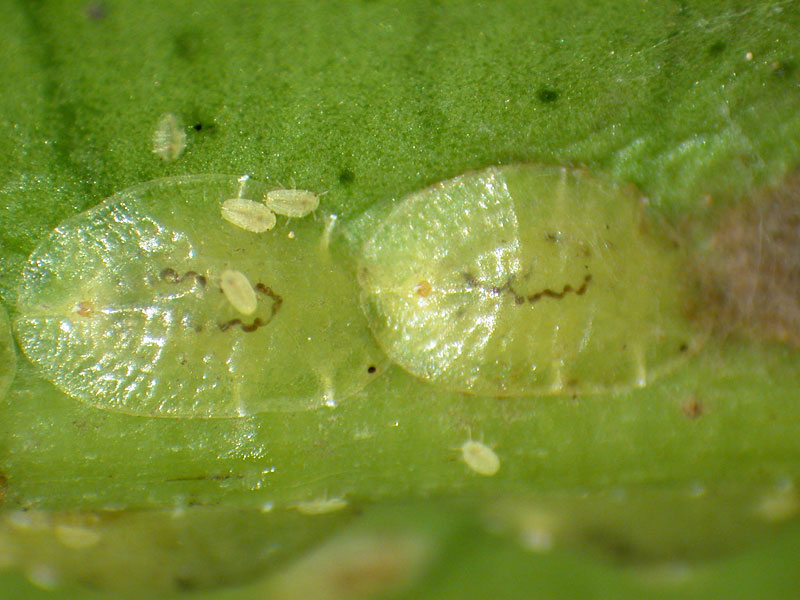
These insects lay their eggs inside these coverings, and eggs hatch within one to three weeks. The young crawlers then migrate to find suitable feeding sites on plants.
Once they found the right feeding site, the young crawlers inserted their piercing-sucking mouthparts in the plant and began sucking sap from their hosts. Next, they secrete hard coverings and establish themselves on these feeding sites, becoming sessile.
Scale insects do not pupate (the young crawlers develop into adults and start the egg-laying process under these coverings) and have many overlapping generations per year on an identical plant.
RELATED: What are the Best Practices for Exterminating Pests on Your Succulents and Cacti?
Control Of Scale Insects
The control of scale insects involves pruning off heavily infested plants. Then, spray organic pesticides such as insecticidal soap to kill the young crawlers and adults. Also, use the practice of the first plant outdoors, then shift houseplants to interior spaces to expose houseplant’s pests to their natural enemies.
Spray plants with horticultural oils to suffocate the scales insects inside their coverings. The chemical spray of plant-based pesticides also provides effective control against scale insects. Therefore, horticultural oils and plant-based pesticides can be employed in an integrated pest management program for scale insect control.
4. Spider Mites
Spider mites are the major destructive pest of indoor and outdoor plants. These also plant sap-sucking houseplant pests that cause severe destruction of young plants. Spider mites are not actual insects but are close relatives of arachnids and scorpions.
They are the tiniest houseplant pests, nearly 1/50 inch long, and vary body color. The adult spider mites are reddish-brown with an oval-shaped appearance. They are most commonly present on plants’ upper and lower surfaces and suck nutrients.
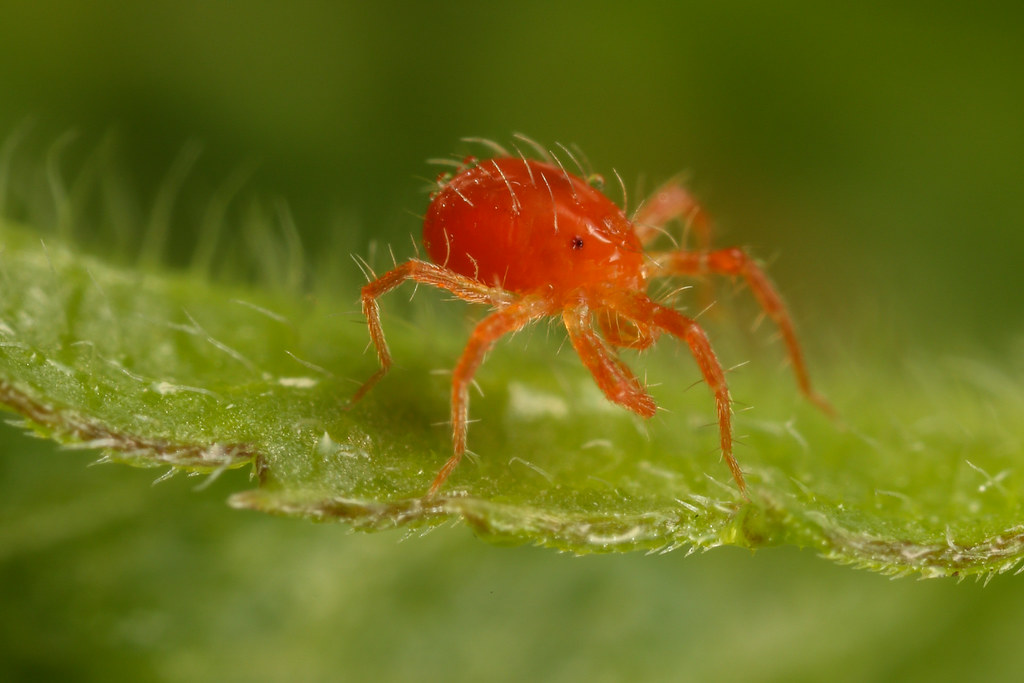
They feed in colonies and turn foliage into yellow. The damage of these common houseplant pests includes drying and yellowing of leaves. And in severe infestations, the plant dies.
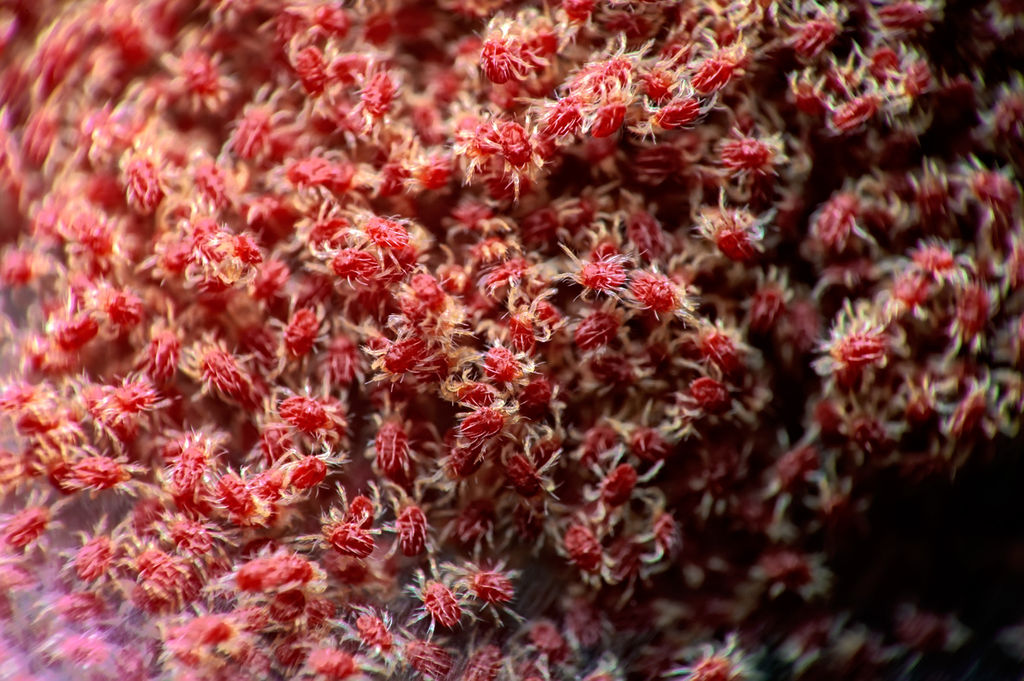
The spider mites are invisible to the naked eye, and their inspection requires a hand lens. The sign of their damage is feeding marks that appear as white or reddish tiny dots on the underside of leaves. The second sign of spider mite infestations is webbing infested plants. These spider mites are the worst enemies of gardeners and houseplant owners.
They reproduce quickly in hot and dry conditions and build huge populations on their host plants. If these houseplant killers go unnoticed, they can ultimately damage indoor and outdoor plants.
The heavy populations of spider mites on host plants turn them into delicate webs. The image below is a representation of heavy infestation.
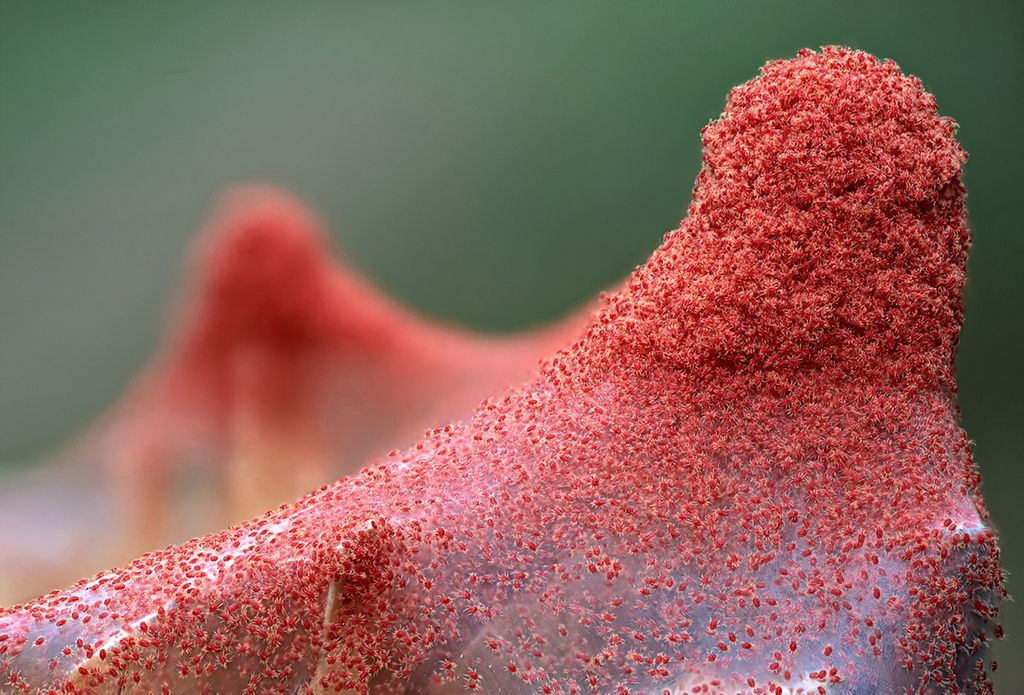
The female spider mites lay eggs after mating. They survive as overwintering eggs in winter and early spring when the temperature is hot and dry, the egg hatches into six-legged tiny mites.
Soon after hatching, the young larvae start sucking plant juices from tissues and leaves. After three to four days of feeding, they molt into eight-legged nymphs. These nymphs again molt two more times and develop into adult spider mites. Under favorable conditions (hot and dry weather), spider mites complete their entire life cycle in five days.
Control Of Spider Mites
To get rid of spider mites on houseplants, spray pesticides, horticultural oil, and neem oil on the plant regularly. Also, completely prune and discard the severely infested plants to discourage the spread of spider mites to neighboring plants. Finally, apply commercially available natural enemies of spider mites and insecticidal soap dilutions to kill the spider mites. The natural predators of spider mites are ladybird beetles, lacewings, and parasitic wasps.
5. Leafminers
Leafminers are not considered common houseplant pests, but their occurrence in vegetables leads to severe reductions in produce. This is because they are fond of green leafy vegetables on the upper and lower leaf surfaces.
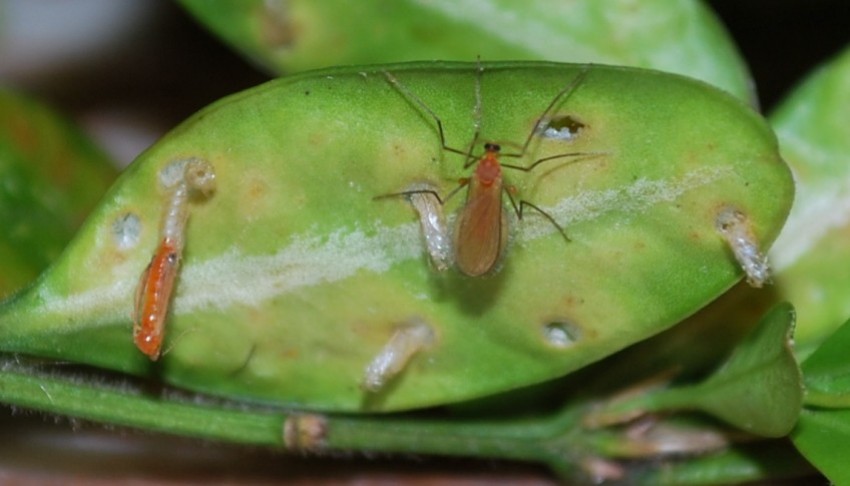
The larval stages of leafminers are voracious eaters of plant foliage and impact the aesthetic value of houseplants. Five to six larvae are present on a single plant leaf in severe infestations. The damage of leafminer larvae includes stunted plant growth, loss of vigor, falling, and yellowing leaves.
The adults are black to gray flies with yellow strips on their bodies with transparent pairs of wings. They show resemblance to small black houseflies and lay eggs on the underside of leaves. The larvae are worm-like and pale yellow.
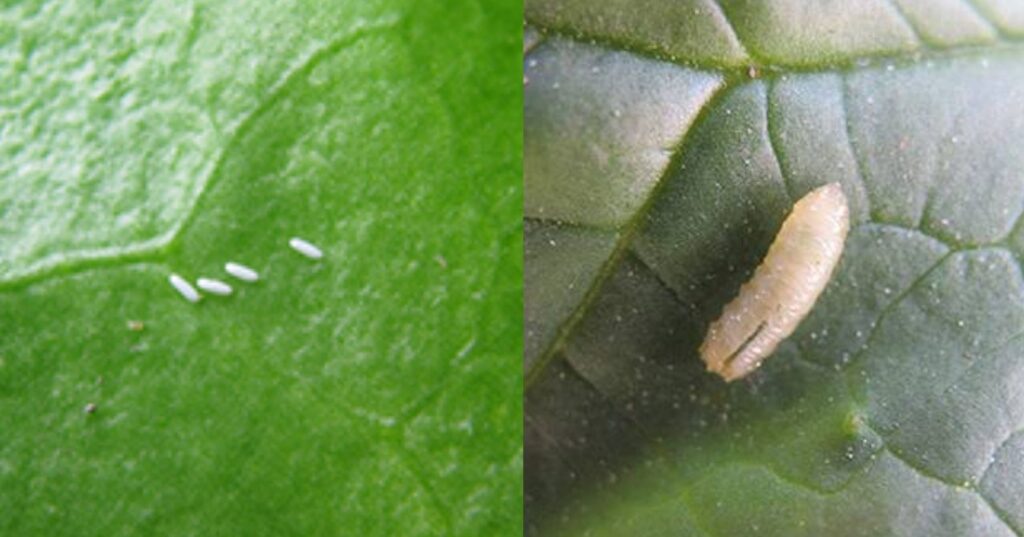
The larval stages leave behind winding tunnels of black feces on the leaf’s upper surfaces during feeding. Sometimes, these mines also serve as an entry point for microbial pathogens such as fungi and bacteria.
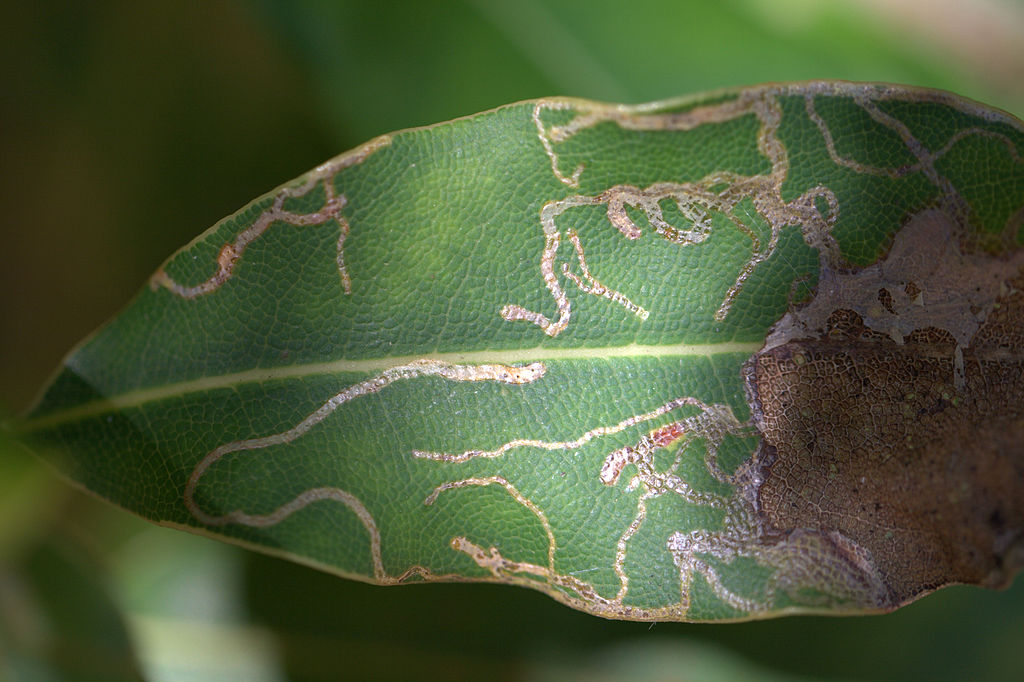
RELATED: Pests in Succulents How to Get Rid of Them for Good!
The entire life cycle of leafminers is completed within three to four weeks. The mature female lays up to 250 eggs just after mating on the underside of leaves. These eggs appear as raised bumps on the bottom of foliage. Within ten days of egg-laying, the egg hatches into larvae. The newly hatched larvae start making mines through the plant tissues.
After two to three weeks of eating, larvae fall to the ground and are ready to pupate. Within fifteen days after pupation, the adults appear and are prepared for the next cycle. Leafminers reproduce quickly in favorable environmental conditions. That’s why they have many generations throughout the year.
Control Of Leafminers
Organic management practices work best to control leafminers rather than pesticide sprays. Because pesticide application encourages the leafminer populations, regularly inspect the plant’s foliage for the signs and symptoms (presence of tunnels on leaves and black fecal secretions by larvae). If there is any on leaves, pluck the leaf from the plant and dispose of it.
Maintain plant health with proper watering and feeding. Because more healthy a plant is, there will be less opportunity for leafminers—spray plants with botanical insecticides such as AzaMax and neem to eliminate leafminer larval infestations.
6. Whiteflies
Whiteflies are also included in the category of common houseplant pests. These tiny insects are the severe enemies of indoor plants, gardens, and field crops. Like scales and aphids, whiteflies suck sap from plant tissues and cause leaf curling. In addition, they are present in crowd forms on their host plants.
When heavily whitefly-infested plants are disturbed, the clouds of winged flies appear from the underside of leaves. Adult and nymphal whiteflies voraciously feed on host plants and stunt their growth. In addition to that, they also turn the foliage yellow and weak.

Like other houseplant pests, whiteflies also secrete honeydew with a black sooty mold. The host plant for whiteflies includes hibiscus, tomato, poinsettia, cucumber, and grape. Whiteflies have a powdery white appearance with short antennas. At the same time, the young crawlers are flat and oval-shaped creatures that settle on the underside of the leaves.
Whiteflies also emerge in dry, hot weather. The young nymphs overwinter on the underside of leaves, and after three to four molts, the larvae develop into adults. They can complete their entire lifecycle within twenty-five days in optimum environmental conditions. The young whiteflies resemble small mealybugs and, after hatching, crawl a distance of a few millimeters (mm) and establish their feeding sites underside of leaves.
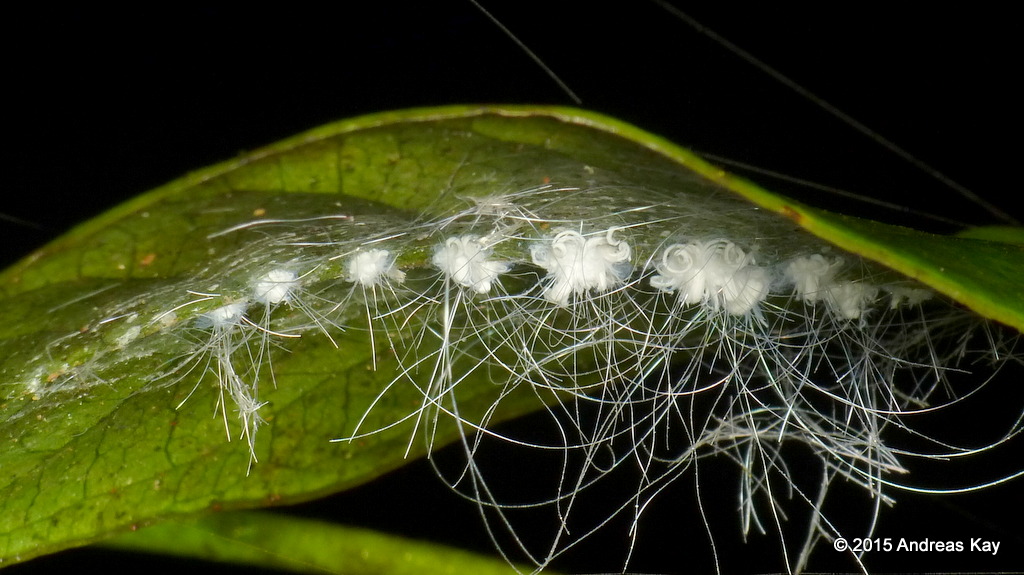
Control Of Whiteflies
The chemical control of whiteflies does not ensure protection against whiteflies. However, to control whiteflies, organic management practices are best. These practices involve using yellow sticky traps, horticultural oils, 70 percent neem oil spray, and botanical insecticides. The natural enemies of whiteflies are parasitic wasps, green lacewings, and ladybird beetles.
To control whitefly populations on houseplants, use yellow sticky cards and spray of insecticidal soap.
7. Russet Mites
This tiny pest infects both vegetables and houseplants. The damage of russet mites is associated with nutrient deficiency symptoms. They are invisible to the naked eye and can only be seen with a magnifying glass. The symptoms of russet mite involve curling and yellowing of leaves, dropping of leaves and fruits. And the symptoms appear from the bottom to upward plant parts.
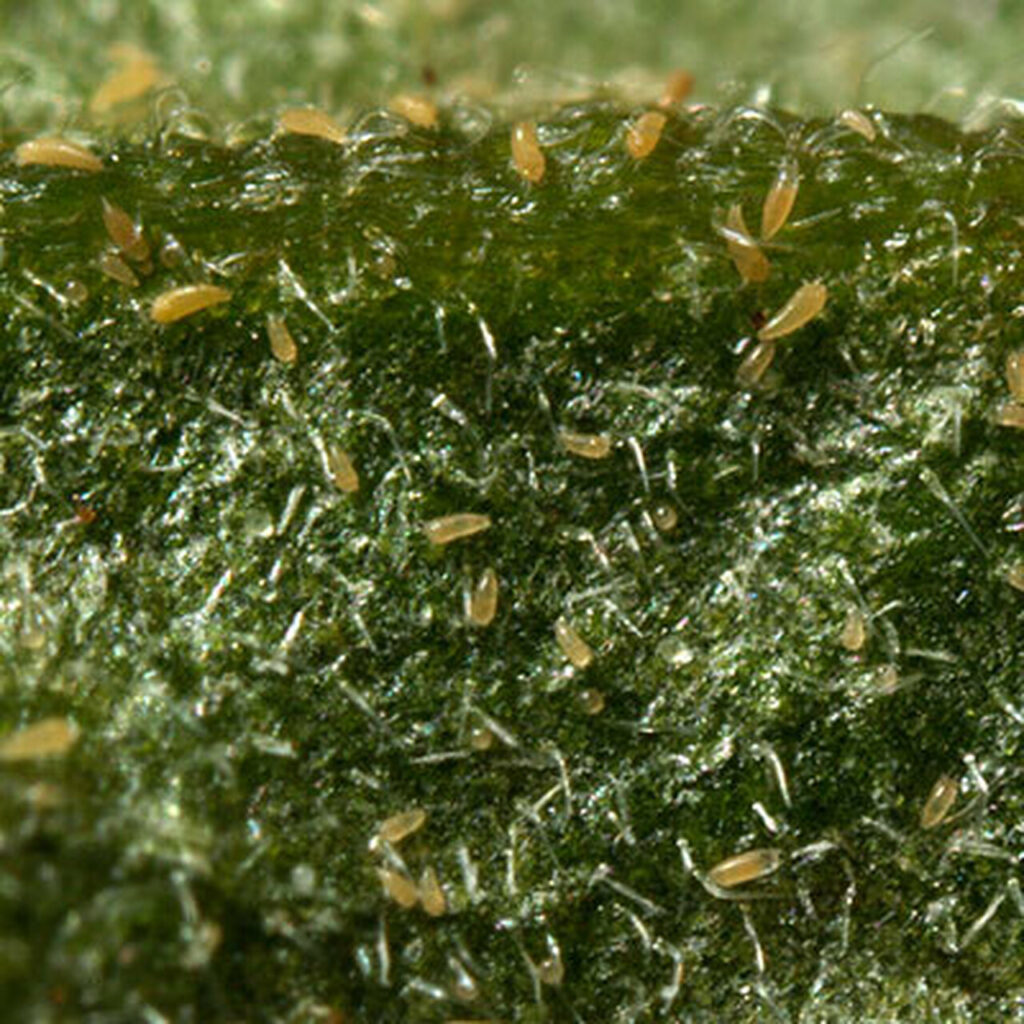
Under a magnifying glass, the adult russet mites appear tapered, translucent with a tint of yellow body color. Unlike spider mites, they do not secrete any sticky material and leave no fine webbing on plants. The russet mites also do not have eight legs.
Russet mites reproduce quickly in moist and warm temperatures. Therefore, they have successful generations both indoors and outdoors. Female russet mites overwinter inside the stems of infected plants and where the branches joined together. The female laid translucent eggs in spring which hatched into young nymphs.
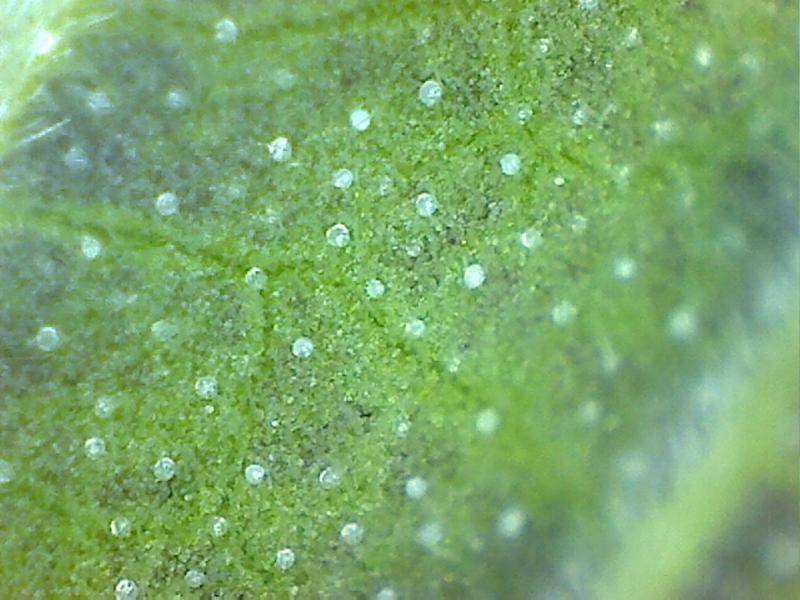
The nymphal stages are similar to adults but smaller in size. The russet mites have six to eight generations per year in warm, moist conditions.
Control Of Russet Mites
The best control measures for russet mites are preventive methods. These involve the careful inspection of plants for any kind of russet mite infestations. Do not purchase plants that are susceptible to these sucking pest infestations.
Always maintain cleanliness in interior spaces and instantly remove the dead and fallen leaves around the houseplants. Do not overwater the houseplants. Periodically release the natural predators of russet mites such as ladybird beetles, parasitic wasp, and green lacewings.
Spray plants with azamax (insecticide) and botanical oils as organic pesticides to kill the noisy infestation of these sap-sucking insects.
8. Thrips
They are the common houseplant pests that suck sap from plants and turn them pale and silvery.
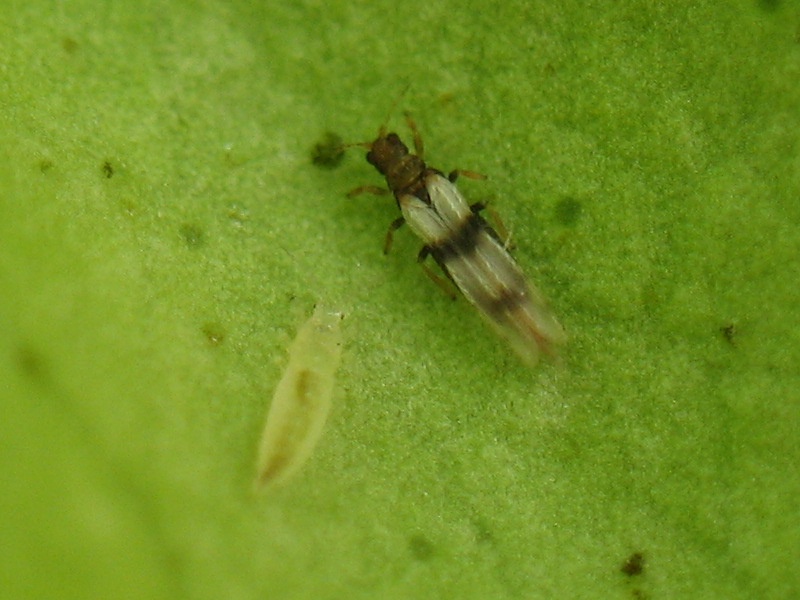
The damage of thrips infestations on houseplants turn them into pale, discolored, and leaves full of blemishes. Thrips suck plant sap and feed in large groups. The injured plants are curled, splotchy, and discolored. In the case of large populations, the plant dies.
Thrips are incredibly active houseplant pests with slender black bodies and feathered wings. Their body size is 1 to 2 mm long. Both adults and pupae overwinter in the soil. The overwintering adults emerge in early spring and lay eggs on flowers and leaves. Each female lays up to 80 eggs in each cycle, and within days, these eggs hatch into young larvae.
The young larvae feed on plant juices, and after two to three molts, they fall on the ground and pupate. Thrips require warm weather for their reproduction. They can have more than 12 to 18 generations per year in warm weather and complete their entire lifecycle in sixteen days.
Control Of Thrips
To control thrips from houseplants and gardens, remove weeds and plant debris from the outdoors to discourage thrips for protected places. Apply natural predators of thrips such as ladybirds and bugs to control the larvae of these pests.
Use sticky cards to trap the adults from houseplants and spray them with insecticidal soap to suffocate the larvae. Then, regularly inspect plants for adult thrips and larvae. And remove any fallen and blemished leaves from the houseplant spaces to avoid population explosions of thrips.
9. Mealybugs
Mealybugs are the most common houseplant pests that appear as white cottony masses on indoor and outdoor plants. They suck sap from plant tissues and secrete sticky substances that encourage the growth of sooty mold.
Adult mealybugs are soft, wingless, and oval-shaped insects that damage the houseplants when in large numbers. Their constant feeding on houseplants causes yellowing and curling of foliage. Because of this, plants lose their strength and die.
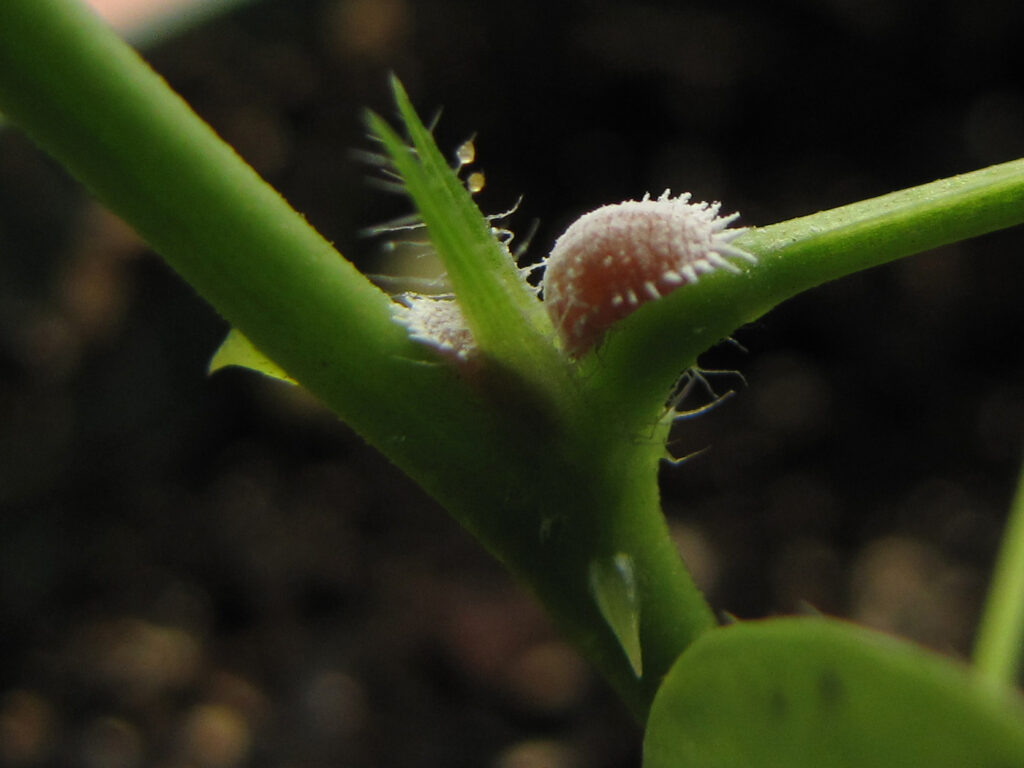
Adult female mealybugs attract to warmer climates and lay up to six hundred eggs in white cottony sacs which resemble downy mildew. The young nymphs are similar to their adults but are smaller in size. Once they establish their feeding sites, they suck plant sap and secrete waxy coverings around them after three molts develop into adults.
Control Of Mealybugs
One of the best ways to get rid of mealybugs is to feed and water houseplants appropriately. Because the overwatering and over-application of nitrogen fertilizers promote new growths and mealybugs prefer tender plant parts.
Spray plants with neem oil to interfere with mealybug growth and development. The neem oil spray act as an antifeedant and kills mealybugs through starvation within one hour. Next, apply insecticidal soaps to mealybug-infested plants. These insecticidal soap ruptures the outer waxy covering of mealybugs and kills them through dehydration. Both neem oil and insecticidal soap kill mealybugs instantly and effectively control them.
All these houseplants mentioned above bugs are a nuisance to pant lovers and can be controlled by various methods. Some of these methods work best for both indoor and outdoor pest control. However, the below practices are the best ways to eliminate these houseplant pests.
What Are The Best Practices To Prevent The Houseplant Pests Infestations?
The best practices to prevent houseplant pest infestations include:
Inspect Plants Before Purchase
A thorough examination of plants prevents the purchase of unhealthy and pest-infested houseplants. In addition, checking plants at first places such as nurseries or plant shop provides insights into plant health and disease resistance. And if there is any pest infestation on plants, tell the owners to quarantine the plant from the rest and do not sell this to anyone.
Use Sterile Potting Soil And Clean Pots
If you are planting a new indoor plant in a new pot, then make sure to completely sterilize the pot and potting soil with insecticidal soap and soil drench. The cleaning of plant pots with bleach or soap will destroy the eggs of insects. At the same time, the sterilization of potting soil will remove larvae and overwintering eggs, pupae, and adults.
Quarantine The New Plant For Few Weeks To Prevent The Pest Problem
Always quarantine the new plant for two weeks to prevent the other healthy houseplants from potential infestations. Then, carefully inspect the plant parts (leaves, branches, and stems for pests) and let them indoors.
Maintain Proper Distance Between Plants
Always keep the interior plants at proper distances—their leaves should not touch each other because the joints between plants encourage the insect pests to migrate to other plants and infect them.
Remove Insect Pests From Plant Balls
Carefully check the plants for insect pests because sometimes they get infected from their own soil ball larvae infestations. Check the plant-soil ball for millipedes and fungus gnat larvae because they prefer damp, moist soil with rich nutrients. If any pest infestation is found, sprinkle 100 percent dry diatomaceous earth to kill the larvae and millipedes.
Frequently Asked Questions
Is It Normal For Indoor Plants to Have Bugs?
Yes, it is normal for houseplants to have bug infestations because they attract them due to their optimal growth conditions. Such as moist and nutrient-rich soil with mild temperatures.
These conditions enhance their reproduction cycle and help them complete it within two weeks to four. Houseplant pests are aphids, whiteflies, thrips, mealybugs, and fungus gnats because they love high humidity, warm temperature, and no air circulation.
What Are Black Bugs on My Plants?
Typically, black bug infestations include aphids, whiteflies, fungus gnats, black flea beetles, thrips, scale insects, and spider mites. These are primarily present on the underside of leaves and near the soil stem.
How Do I Keep Plants Bug Free?
The best way to keep houseplants bug free are:
- Carefully inspect the plants before purchase for insect pest infestations
- Use clean pots and sterilized potting soil to remove any insect pest overwintering eggs and larvae, pupae
- Keep the houseplants at a proper distance in interior spaces to avoid the possible touching and junctions for the migration of pests.
- Quarantine the new plants for one or two weeks and scrutinize them. Then, let them be with the older houseplants.
- Spray regularly with mild dish soap dilutions to wash off the adult pests
- Keep the plant healthy because if the houseplant is healthy, then there are fewer chances of insect pest infestations
- Keep indoors clean and dry
- Appropriately water and feed the plant. Do not overwater and over-fertilize the plants because it will promote vegetative growth and more mealybug and scale insect infestations.
What Can You Spray on Plants to Keep Bugs Away?
The best homemade spray for the control of insect pests is:
Mix one part of apple cider vinegar to three pieces of water to create a spray for houseplants. Spray this mixture on plants daily. Once the problem is gone, repeat this application once a week to keep the pests away.
Another homemade spray is one tablespoon of dish soap, one tablespoon of vegetable oil, and one part of water to create a sprayable mixture. Apply this spray on plants against scale insects, fungus gnats, and mealybugs.
How Do I Identify Houseplant Bugs?
The visible symptoms of damage help identify pest infestations on houseplants. These symptoms include yellowing and curling of foliage, falling of leaves, the occurrence of blemishes on leaves and fruits. In addition, plants visibly look weaker and die due to foliage falling.
Sources For Further Reading
- Planet Natural. (2018, March 20). Indoor Plant Pests: Bug Identification & Control. Retrieved February 17, 2022, from https://www.planetnatural.com/pest-problem-solver/houseplant-pests/
- Oakes, S. R. (2019, August 25). How to identify common houseplant pests. HOMESTEAD BROOKLYN. Retrieved February 17, 2022, from https://homesteadbrooklyn.com/all/2017/1/17/common-insects-pests-on-houseplants
- Scott, J. M., & Williamson, J. (2021, September 13). Common Houseplant Insects & Related Pests | Home & Garden Information Center. Home & Garden Information Center | Clemson University, South Carolina. Retrieved February 14, 2022, from https://hgic.clemson.edu/factsheet/common-houseplant-insects-related-pests/
Now that you know the different types of houseplant bugs, make sure to also read our other plant bugs tips:
Slug Eggs in Soil: How to Identify and Get Rid of Them?
How to Kill Mealybugs on Plants With Organic and Inorganic Methods?
Fungus Gnats in Houseplants & How to Identify and Effectively Control Them?







